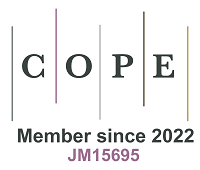REFERENCES
1. Rai M, Curley M, Coleman Z, Demontis F. Contribution of proteases to the hallmarks of aging and to age-related neurodegeneration. Aging Cell 2022;21:e13603.
3. Labzin LI, Heneka MT, Latz E. Innate immunity and neurodegeneration. Annu Rev Med 2018;69:437-49.
5. Wareham LK, Liddelow SA, Temple S, et al. Solving neurodegeneration: common mechanisms and strategies for new treatments. Mol Neurodegener 2022;17:23.
6. Kabir MT, Uddin MS, Abdeen A, et al. Evidence linking protein misfolding to quality control in progressive neurodegenerative diseases. Curr Top Med Chem 2020;20:2025-43.
7. Tu Z, Yang W, Yan S, Guo X, Li XJ. CRISPR/Cas9: a powerful genetic engineering tool for establishing large animal models of neurodegenerative diseases. Mol Neurodegener 2015;10:35.
8. Drummond E, Wisniewski T. Alzheimer’s disease: experimental models and reality. Acta Neuropathol 2017;133:155-75.
9. Ding SL. Comparative anatomy of the prosubiculum, subiculum, presubiculum, postsubiculum, and parasubiculum in human, monkey, and rodent. J Comp Neurol 2013;521:4145-62.
10. Freire-Cobo C, Edler MK, Varghese M, et al. Comparative neuropathology in aging primates: a perspective. Am J Primatol 2021;83:e23299.
11. Dorus S, Vallender EJ, Evans PD, et al. Accelerated evolution of nervous system genes in the origin of Homo sapiens. Cell 2004;119:1027-40.
12. Kanthaswamy S, Ng J, Satkoski Trask J, et al. The genetic composition of populations of cynomolgus macaques (Macaca fascicularis) used in biomedical research. J Med Primatol 2013;42:120-31.
13. Kumar S, Hedges SB. TimeTree2: species divergence times on the iPhone. Bioinformatics 2011;27:2023-4.
14. Amiez C, Sallet J, Hopkins WD, et al. Sulcal organization in the medial frontal cortex provides insights into primate brain evolution. Nat Commun 2019;10:3437.
15. Zheng N, Li M, Wu Y, et al. A novel technology for in vivo detection of cell type-specific neural connection with AQP1-encoding rAAV2-retro vector and metal-free MRI. Neuroimage 2022;258:119402.
16. Garin CM, Hori Y, Everling S, et al. An evolutionary gap in primate default mode network organization. Cell Rep 2022;39:110669.
17. Lanciego JL, Vázquez A. The basal ganglia and thalamus of the long-tailed macaque in stereotaxic coordinates. A template atlas based on coronal, sagittal and horizontal brain sections. Brain Struct Funct 2012;217:613-66.
18. Zhu J, Qiu A. Chinese adult brain atlas with functional and white matter parcellation. Sci Data 2022;9:352.
19. Joutsa J, Moussawi K, Siddiqi SH, et al. Brain lesions disrupting addiction map to a common human brain circuit. Nat Med 2022;28:1249-55.
20. Bjerke IE, Cullity ER, Kjelsberg K, Charan KM, Leergaard TB, Kim JH. DOPAMAP, high-resolution images of dopamine 1 and 2 receptor expression in developing and adult mouse brains. Sci Data 2022;9:175.
21. Yin P, Li S, Li XJ, Yang W. New pathogenic insights from large animal models of neurodegenerative diseases. Protein Cell 2022;13:707-20.
22. Hao ZZ, Wei JR, Xiao D, et al. Single-cell transcriptomics of adult macaque hippocampus reveals neural precursor cell populations. Nat Neurosci 2022;25:805-17.
23. Sorrells SF, Paredes MF, Cebrian-Silla A, et al. Human hippocampal neurogenesis drops sharply in children to undetectable levels in adults. Nature 2018;555:377-81.
24. Eriksson PS, Perfilieva E, Björk-Eriksson T, et al. Neurogenesis in the adult human hippocampus. Nat Med 1998;4:1313-7.
25. Fang R, Xia C, Close JL, et al. Conservation and divergence of cortical cell organization in human and mouse revealed by MERFISH. Science 2022;377:56-62.
26. Chen A, Liao S, Cheng M, et al. Spatiotemporal transcriptomic atlas of mouse organogenesis using DNA nanoball-patterned arrays. Cell 2022;185:1777-1792.e21.
27. Han L, Wei X, Liu C, et al. Cell transcriptomic atlas of the non-human primate Macaca fascicularis. Nature 2022;604:723-31.
28. Hickman S, Izzy S, Sen P, Morsett L, El Khoury J. Microglia in neurodegeneration. Nat Neurosci 2018;21:1359-69.
29. Lee HG, Wheeler MA, Quintana FJ. Function and therapeutic value of astrocytes in neurological diseases. Nat Rev Drug Discov 2022;21:339-58.
30. Bernhardi R, Eugenin-von Bernhardi L, Eugenin J. Microglial cell dysregulation in brain aging and neurodegeneration. Front Aging Neurosci 2015;7:124.
32. Geirsdottir L, David E, Keren-Shaul H, et al. Cross-species single-cell analysis reveals divergence of the primate microglia program. Cell 2020;181:746.
33. Matyash V, Kettenmann H. Heterogeneity in astrocyte morphology and physiology. Brain Res Rev 2010;63:2-10.
34. Rash BG, Duque A, Morozov YM, Arellano JI, Micali N, Rakic P. Gliogenesis in the outer subventricular zone promotes enlargement and gyrification of the primate cerebrum. Proc Natl Acad Sci U S A 2019;116:7089-94.
35. Falcone C, Wolf-Ochoa M, Amina S, et al. Cortical interlaminar astrocytes across the therian mammal radiation. J Comp Neurol 2019;527:1654-74.
36. Oberheim NA, Wang X, Goldman S, Nedergaard M. Astrocytic complexity distinguishes the human brain. Trends Neurosci 2006;29:547-53.
37. Xu R, Zanotti-Fregonara P, Zoghbi SS, et al. Synthesis and evaluation in monkey of [(18)F]4-fluoro-N-methyl-N-(4-(6-(methylamino)pyrimidin-4-yl)thiazol-2-yl)benzamide ([(18)F]FIMX): a promising radioligand for PET imaging of brain metabotropic glutamate receptor 1 (mGluR1). J Med Chem 2013;56:9146-55.
38. Knox EG, Aburto MR, Clarke G, Cryan JF, O'Driscoll CM. The blood-brain barrier in aging and neurodegeneration. Mol Psychiatry 2022;27:2659-73.
39. Pike VW. PET radiotracers: crossing the blood-brain barrier and surviving metabolism. Trends Pharmacol Sci 2009;30:431-40.
40. Liu H, Jin H, Yue X, et al. Comparison of [11C]TZ1964B and [18F]MNI659 for PET imaging brain PDE10A in nonhuman primates. Pharmacol Res Perspect 2016;4:e00253.
41. Goertsen D, Flytzanis NC, Goeden N, et al. AAV capsid variants with brain-wide transgene expression and decreased liver targeting after intravenous delivery in mouse and marmoset. Nat Neurosci 2022;25:106-15.
42. Terstappen GC, Meyer AH, Bell RD, Zhang W. Strategies for delivering therapeutics across the blood-brain barrier. Nat Rev Drug Discov 2021;20:362-83.
43. Barres BA. The mystery and magic of glia: a perspective on their roles in health and disease. Neuron 2008;60:430-40.
44. Allen NJ, Lyons DA. Glia as architects of central nervous system formation and function. Science 2018;362:181-5.
45. Stephenson J, Nutma E, van der Valk P, Amor S. Inflammation in CNS neurodegenerative diseases. Immunology 2018;154:204-19.
46. Scheiblich H, Trombly M, Ramirez A, Heneka MT. Neuroimmune connections in aging and neurodegenerative diseases. Trends Immunol 2020;41:300-12.
47. Ulland TK, Colonna M. TREM2 - a key player in microglial biology and Alzheimer disease. Nat Rev Neurol 2018;14:667-75.
48. Poduri A, Gearing M, Rebeck GW, Mirra SS, Tigges J, Hyman BT. Apolipoprotein E4 and beta amyloid in senile plaques and cerebral blood vessels of aged rhesus monkeys. Am J Pathol 1994;144:1183-7.
49. Mahley RW, Weisgraber KH, Huang Y. Apolipoprotein E4: a causative factor and therapeutic target in neuropathology, including Alzheimer’s disease. Proc Natl Acad Sci U S A 2006;103:5644-51.
50. Herndon JG, Moss MB, Rosene DL, Killiany RJ. Patterns of cognitive decline in aged rhesus monkeys. Behavioural Brain Research 1997;87:25-34.
51. Frye BM, Craft S, Register TC, et al. Early Alzheimer’s disease-like reductions in gray matter and cognitive function with aging in nonhuman primates. Alzheimers Dement (N Y) 2022;8:e12284.
54. Perrin RJ, Fagan AM, Holtzman DM. Multimodal techniques for diagnosis and prognosis of Alzheimer’s disease. Nature 2009;461:916-22.
55. Dubois B, Feldman HH, Jacova C, et al. Advancing research diagnostic criteria for Alzheimer’s disease: the IWG-2 criteria. The Lancet Neurology 2014;13:614-29.
56. Kunkle BW, Grenier-Boley B, Sims R, et al. Alzheimer Disease Genetics Consortium (ADGC); European Alzheimer’s Disease Initiative (EADI); Cohorts for Heart and Aging Research in Genomic Epidemiology Consortium (CHARGE); Genetic and Environmental Risk in AD/Defining Genetic. Genetic meta-analysis of diagnosed Alzheimer’s disease identifies new risk loci and implicates Aβ, tau, immunity and lipid processing. Nat Genet 2019;51:414-30.
57. Masters CL, Bateman R, Blennow K, Rowe CC, Sperling RA, Cummings JL. Alzheimer’s disease. Nat Rev Dis Primers 2015;1:15056.
58. Götz J, Ittner LM. Animal models of Alzheimer’s disease and frontotemporal dementia. Nat Rev Neurosci 2008;9:532-44.
59. Sakakibara Y, Sekiya M, Saito T, Saido TC, Iijima KM. Amyloid-β plaque formation and reactive gliosis are required for induction of cognitive deficits in App knock-in mouse models of Alzheimer’s disease. BMC Neurosci 2019;20:13.
60. McGowan E, Eriksen J, Hutton M. A decade of modeling Alzheimer’s disease in transgenic mice. Trends Genet 2006;22:281-9.
61. Sasaguri H, Hashimoto S, Watamura N, et al. Recent advances in the modeling of Alzheimer’s disease. Front Neurosci 2022;16:807473.
62. Flood DG, Lin YG, Lang DM, et al. A transgenic rat model of Alzheimer’s disease with extracellular Abeta deposition. Neurobiol Aging 2009;30:1078-90.
63. Elder GA, Gama Sosa MA, De Gasperi R, Dickstein DL, Hof PR. Presenilin transgenic mice as models of Alzheimer’s disease. Brain Struct Funct 2010;214:127-43.
64. Leuzy A, Smith R, Ossenkoppele R, et al. Diagnostic performance of RO948 F 18 tau positron emission tomography in the differentiation of Alzheimer disease from other neurodegenerative disorders. JAMA Neurol 2020;77:955-65.
65. Götz J, Gladbach A, Pennanen L, et al. Animal models reveal role for tau phosphorylation in human disease. Biochim Biophys Acta 2010;1802:860-71.
66. Eskandari-Sedighi G, Daude N, Gapeshina H, et al. The CNS in inbred transgenic models of 4-repeat Tauopathy develops consistent tau seeding capacity yet focal and diverse patterns of protein deposition. Mol Neurodegener 2017;12:72.
67. Myers A, McGonigle P. Overview of transgenic mouse models for Alzheimer’s disease. Curr Protoc Neurosci 2019;89:e81.
68. Esquerda-Canals G, Montoliu-Gaya L, Guell-Bosch J, Villegas S. Mouse models of Alzheimer’s disease. J Alzheimers Dis 2017;57:1171-83.
69. Kragh PM, Nielsen AL, Li J, et al. Hemizygous minipigs produced by random gene insertion and handmade cloning express the Alzheimer’s disease-causing dominant mutation APPsw. Transgenic Res 2009;18:545-58.
70. Jakobsen JE, Johansen MG, Schmidt M, et al. Generation of minipigs with targeted transgene insertion by recombinase-mediated cassette exchange (RMCE) and somatic cell nuclear transfer (SCNT). Transgenic Res 2013;22:709-23.
71. Søndergaard LV, Ladewig J, Dagnæs-Hansen F, Herskin MS, Holm IE. Object recognition as a measure of memory in 1-2 years old transgenic minipigs carrying the APPsw mutation for Alzheimer’s disease. Transgenic Res 2012;21:1341-8.
73. Beckman D, Morrison JH. Towards developing a rhesus monkey model of early Alzheimer’s disease focusing on women’s health. Am J Primatol 2021;83:e23289.
74. Heuer E, Rosen RF, Cintron A, Walker LC. Nonhuman primate models of Alzheimer-like cerebral proteopathy. Curr Pharm Des 2012;18:1159-69.
75. Paspalas CD, Carlyle BC, Leslie S, et al. The aged rhesus macaque manifests Braak stage III/IV Alzheimer’s-like pathology. Alzheimers Dement 2018;14:680-91.
76. Arnsten AFT, Datta D, Leslie S, Yang ST, Wang M, Nairn AC. Alzheimer’s-like pathology in aging rhesus macaques: unique opportunity to study the etiology and treatment of Alzheimer’s disease. Proc Natl Acad Sci U S A ;2019:26230-8.
77. Arnsten AFT, Datta D, Preuss TM. Studies of aging nonhuman primates illuminate the etiology of early-stage Alzheimer’s-like neuropathology: An evolutionary perspective. Am J Primatol 2021;83:e23254.
78. Yang M, Miao J, Rizak J, et al. Alzheimer’s disease and methanol toxicity (part 2): lessons from four rhesus macaques (Macaca mulatta) chronically fed methanol. J Alzheimers Dis 2014;41(4):1131-47.
79. Zhai R, Rizak J, Zheng N, et al. Alzheimer’s disease-like pathologies and cognitive impairments induced by formaldehyde in non-human primates. Curr Alzheimer Res 2018;15:1304-21.
80. Beckman D, Ott S, Donis-Cox K, et al. Oligomeric Aβ in the monkey brain impacts synaptic integrity and induces accelerated cortical aging. Proc Natl Acad Sci U S A ;2019:26239-46.
81. Forny-Germano L, Lyra e Silva NM, Batista AF, et al. Alzheimer’s disease-like pathology induced by amyloid-β oligomers in nonhuman primates. J Neurosci 2014;34:13629-43.
82. Yue F, Feng S, Lu C, et al. Synthetic amyloid-β oligomers drive early pathological progression of Alzheimer’s disease in nonhuman primates. iScience 2021;24:103207.
83. Veitch DP, Weiner MW, Aisen PS, et al. Alzheimer’s Disease Neuroimaging Initiative. Understanding disease progression and improving Alzheimer’s disease clinical trials: recent highlights from the Alzheimer’s Disease Neuroimaging Initiative. Alzheimers Dement 2019;15:106-52.
84. Iaccarino L, Tammewar G, Ayakta N, et al. Local and distant relationships between amyloid, tau and neurodegeneration in Alzheimer’s Disease. Neuroimage Clin 2018;17:452-64.
85. Beckman D, Chakrabarty P, Ott S, et al. A novel tau-based rhesus monkey model of Alzheimer’s pathogenesis. Alzheimers Dement 2021;17:933-45.
87. Armstrong MJ, Okun MS. Diagnosis and treatment of Parkinson disease: a review. JAMA 2020;323:548-60.
88. Kordower JH, Olanow CW, Dodiya HB, et al. Disease duration and the integrity of the nigrostriatal system in Parkinson’s disease. Brain 2013;136:2419-31.
90. Lee Y, Dawson VL, Dawson TM. Animal models of Parkinson’s disease: vertebrate genetics. Cold Spring Harb Perspect Med 2012;2:a009324-a009324.
91. Teil M, Arotcarena ML, Dehay B. A new rise of non-human primate models of synucleinopathies. Biomedicines 2021;9:272.
92. Li H, Su LY, Yang L, et al. A cynomolgus monkey with naturally occurring Parkinson’s disease. Natl Sci Rev 2021;8:nwaa292.
93. Porras G, Li Q, Bezard E. Modeling Parkinson’s disease in primates: the MPTP model. Cold Spring Harb Perspect Med 2012;2:a009308.
94. Tieu K. A guide to neurotoxic animal models of Parkinson’s disease. Cold Spring Harb Perspect Med 2011;1:a009316.
95. Lei X, Li H, Huang B, et al. 1-Methyl-4-phenylpyridinium stereotactic infusion completely and specifically ablated the nigrostriatal dopaminergic pathway in rhesus macaque. PLoS One 2015;10:e0127953.
96. Huang B, Wu S, Wang Z, et al. Phosphorylated α-synuclein accumulations and lewy body-like pathology distributed in Parkinson’s disease-related brain areas of aged rhesus monkeys treated with MPTP. Neuroscience 2018;379:302-15.
97. Koprich JB, Johnston TH, Reyes G, Omana V, Brotchie JM. Towards a non-human primate model of alpha-synucleinopathy for development of therapeutics for Parkinson’s disease: optimization of AAV1/2 delivery parameters to drive sustained expression of alpha synuclein and dopaminergic degeneration in macaque. PLoS One 2016;11:e0167235.
98. Niu Y, Guo X, Chen Y, et al. Early Parkinson’s disease symptoms in α-synuclein transgenic monkeys. Hum Mol Genet 2015;24:2308-17.
99. Yang W, Wang G, Wang CE, et al. Mutant alpha-synuclein causes age-dependent neuropathology in monkey brain. J Neurosci 2015;35:8345-58.
100. Blesa J, Przedborski S. Parkinson’s disease: animal models and dopaminergic cell vulnerability. Front Neuroanat 2014;8:155.
101. Yang W, Liu Y, Tu Z, et al. CRISPR/Cas9-mediated PINK1 deletion leads to neurodegeneration in rhesus monkeys. Cell Res 2019;29:334-6.
102. Chen ZZ, Wang JY, Kang Y, et al. PINK1 gene mutation by pair truncated sgRNA/Cas9-D10A in cynomolgus monkeys. Zool Res 2021;42:469-77.
103. Yang W, Guo X, Tu Z, et al. PINK1 kinase dysfunction triggers neurodegeneration in the primate brain without impacting mitochondrial homeostasis. Protein Cell 2022;13:26-46.
104. Yang W, Li S, Li XJ. A CRISPR monkey model unravels a unique function of PINK1 in primate brains. Mol Neurodegener 2019;14:17.
105. Li H, Wu S, Ma X, et al. Co-editing PINK1 and DJ-1 genes via adeno-associated virus-delivered CRISPR/Cas9 system in adult monkey brain elicits classical parkinsonian phenotype. Neurosci Bull 2021;37:1271-88.
106. Grad LI, Rouleau GA, Ravits J, Cashman NR. Clinical spectrum of amyotrophic lateral sclerosis (ALS). Cold Spring Harb Perspect Med 2017;7:a024117.
107. Talbott EO, Malek AM, Lacomis D. The epidemiology of amyotrophic lateral sclerosis. Handb Clin Neurol 2016;138:225-38.
108. Forman MS, Trojanowski JQ, Lee VM. TDP-43: a novel neurodegenerative proteinopathy. Curr Opin Neurobiol 2007;17:548-55.
109. Saberi S, Stauffer JE, Schulte DJ, Ravits J. Neuropathology of amyotrophic lateral sclerosis and its variants. Neurol Clin 2015;33:855-76.
111. Cruz S, Cleveland DW. Understanding the role of TDP-43 and FUS/TLS in ALS and beyond. Curr Opin Neurobiol 2011;21:904-19.
112. Neumann M, Sampathu DM, Kwong LK, et al. Ubiquitinated TDP-43 in frontotemporal lobar degeneration and amyotrophic lateral sclerosis. Science 2006;314:130-3.
113. Chen-Plotkin AS, Lee VM, Trojanowski JQ. TAR DNA-binding protein 43 in neurodegenerative disease. Nat Rev Neurol 2010;6:211-20.
114. Mitchell JC, Constable R, So E, et al. Wild type human TDP-43 potentiates ALS-linked mutant TDP-43 driven progressive motor and cortical neuron degeneration with pathological features of ALS. Acta Neuropathol Commun 2015;3:36.
115. Wang G, Yang H, Yan S, et al. Cytoplasmic mislocalization of RNA splicing factors and aberrant neuronal gene splicing in TDP-43 transgenic pig brain. Mol Neurodegener 2015;10:42.
116. Huang C, Tong J, Bi F, Zhou H, Xia XG. Mutant TDP-43 in motor neurons promotes the onset and progression of ALS in rats. J Clin Invest 2012;122:107-18.
117. Shan X, Chiang PM, Price DL, Wong PC. Altered distributions of Gemini of coiled bodies and mitochondria in motor neurons of TDP-43 transgenic mice. Proc Natl Acad Sci U S A 2010;107:16325-30.
118. Wils H, Kleinberger G, Janssens J, et al. TDP-43 transgenic mice develop spastic paralysis and neuronal inclusions characteristic of ALS and frontotemporal lobar degeneration. Proc Natl Acad Sci U S A 2010;107:3858-63.
119. Yin P, Guo X, Yang W, et al. Caspase-4 mediates cytoplasmic accumulation of TDP-43 in the primate brains. Acta Neuropathol 2019;137:919-37.
120. Uchida A, Sasaguri H, Kimura N, et al. Non-human primate model of amyotrophic lateral sclerosis with cytoplasmic mislocalization of TDP-43. Brain 2012;135:833-46.
121. Yang H, Yang S, Jing L, et al. Truncation of mutant huntingtin in knock-in mice demonstrates exon1 huntingtin is a key pathogenic form. Nat Commun 2020;11:2582.
125. Yang SH, Cheng PH, Banta H, et al. Towards a transgenic model of Huntington’s disease in a non-human primate. Nature 2008;453:921-4.
126. Yang SH, Cheng PH, Sullivan RT, Thomas JW, Chan AW. Lentiviral integration preferences in transgenic mice. Genesis 2008;46:711-8.
127. Putkhao K, Kocerha J, Cho IK, Yang J, Parnpai R, Chan AW. Pathogenic cellular phenotypes are germline transmissible in a transgenic primate model of Huntington’s disease. Stem Cells Dev 2013;22:1198-205.
128. Moran S, Chi T, Prucha MS, et al. Germline transmission in transgenic Huntington’s disease monkeys. Theriogenology 2015;84:277-85.
129. Khampang S, Parnpai R, Mahikul W, Easley CA 4th, Cho IK, Chan AWS. CAG repeat instability in embryonic stem cells and derivative spermatogenic cells of transgenic Huntington’s disease monkey. J Assist Reprod Genet 2021;38:1215-29.
130. Kocerha J, Liu Y, Willoughby D, et al. Longitudinal transcriptomic dysregulation in the peripheral blood of transgenic Huntington’s disease monkeys. BMC Neurosci 2013;14:88.
131. Chan AW, Xu Y, Jiang J, et al. A two years longitudinal study of a transgenic Huntington disease monkey. BMC Neurosci 2014;15:36.
132. Yang D, Wang CE, Zhao B, et al. Expression of Huntington’s disease protein results in apoptotic neurons in the brains of cloned transgenic pigs. Hum Mol Genet 2010;19:3983-94.
133. Baxa M, Hruska-Plochan M, Juhas S, et al. A transgenic minipig model of Huntington’s Disease. J Huntingtons Dis 2013;2:47-68.
134. Schuldenzucker V, Schubert R, Muratori LM, et al. Behavioral testing of minipigs transgenic for the Huntington gene-A three-year observational study. PLoS One 2017;12:e0185970.
135. Yan S, Tu Z, Liu Z, et al. A Huntingtin knockin pig model recapitulates features of selective neurodegeneration in Huntington’s disease. Cell 2018;173:989-1002.e13.
136. Meng L, Ely JJ, Stouffer RL, Wolf DP. Rhesus monkeys produced by nuclear transfer. Biol Reprod 1997;57:454-9.
137. Liu Z, Cai Y, Wang Y, et al. Cloning of macaque monkeys by somatic cell nuclear transfer. Cell 2018;172:881-887.e7.
138. Liu Z, Cai Y, Liao Z, et al. Cloning of a gene-edited macaque monkey by somatic cell nuclear transfer. Natl Sci Rev 2019;6:101-8.
139. Yeh WH, Shubina-Oleinik O, Levy JM, et al. In vivo base editing restores sensory transduction and transiently improves auditory function in a mouse model of recessive deafness. Sci Transl Med 2020;12:eaay9101.
141. Mazid MA, Ward C, Luo Z, et al. Rolling back human pluripotent stem cells to an eight-cell embryo-like stage. Nature 2022;605:315-24.







